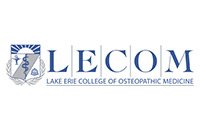Healthcare News
Metformin Reduces Knee Pain in Knee Osteoarthritis With Overweight, Obesity
Metformin was associated with significant improvements in knee pain, stiffness, and function among patients with knee osteoarthritis and overweight or obesity.
Using testosterone gel to treat women recovering from hip fractures provides no added benefits, clinical trial finds
Hip fractures, often a result of a fall, are the most serious type of osteoporotic fracture because they are accompanied by considerable pain, loss of muscle and bone strength, reduced mobility and independence with daily activities, and increased risk for future fractures and death. More than 200,000 American women every year experience hip fractures, and up to three-quarters of them never fully regain their ability to resume normal activities like walking, even after undergoing weeks of exercise rehabilitation.
How to Treat Hip Bursitis
The best treatment for hip bursitis, or any form of bursitis, is aimed at controlling the inflammation caused by this condition. As with any treatment program, always talk with your healthcare provider before initiating any specific treatments.
Have an ACL or Achilles injury? Your turf field might be to blame
Brian Feeley, MD, UCSF orthopedic surgeon and professor and chief of the sports medicine and shoulder surgery service, talks about the evidence for injury and his recent study published in the Orthopaedic Journal of Sports Medicine indicating that lower extremities bear the brunt.
How ACL and PCL Injuries Differ
The anterior cruciate ligament (ACL) and posterior cruciate ligament (PCL) are two major ligaments in the knee that work together to provide stability. They are also common sites of serious tears, particularly in athletes. Although ACL and PCL injuries may initially appear to have similar symptoms, such as knee instability and pain, the ligament injuries have unique characteristics that make them differ in terms of who is affected, extent of injury, and treatment guidelines.
Why do women have more trouble after knee injuries? Model explains estrogen's role
A computer model of the cellular environment inside the knee developed by UT Southwestern Medical Center researchers sheds light on why women tend to have worse outcomes after knee injuries than men. Their findings, published in Scientific Reports, could facilitate research into new therapies for knee inflammatory disorders and personalized treatments for patients with these conditions.
Hip Fracture Types and Complications
A hip fracture, also called a broken hip, is a common injury. In the United States, hip fractures are the most common broken bone that requires hospitalization; about 300,000 Americans are hospitalized for a hip fracture every year.
What Causes Buttock Pain and How to Relieve It
Buttock pain can have several causes, including injuries, overuse conditions, and nerve compression. Because buttock pain can significantly impact your ability to sit, stand, or walk, it is important to determine the underlying cause, receive appropriate treatment, and prevent your condition from getting worse.
How to identify and treat inner knee pain
The inner or medial knee refers to the part closest to the other knee. Injuries and arthritis are two possible causes of inner knee pain. Treatment options depend on the cause and include warm or cold packs, exercise, and medication.
Boost Your Mobility With These Gait Training Exercises
Gait training exercises are movements designed to help improve strength, balance and coordination when walking. They may be part of a physical therapy program for a person recovering from a stroke, an injury, or surgery, as well as those dealing with a chronic condition that affects their ability to walk.











